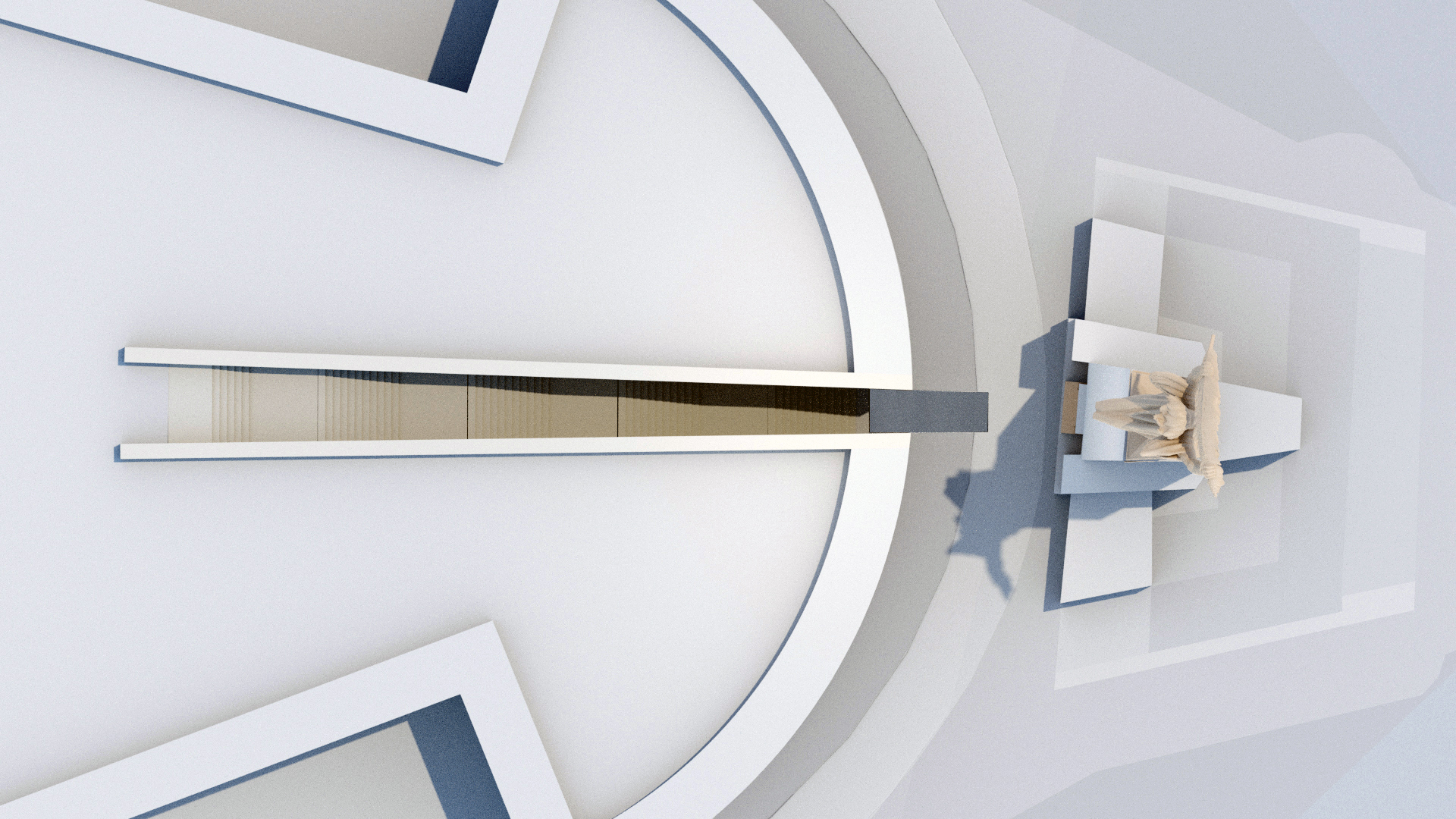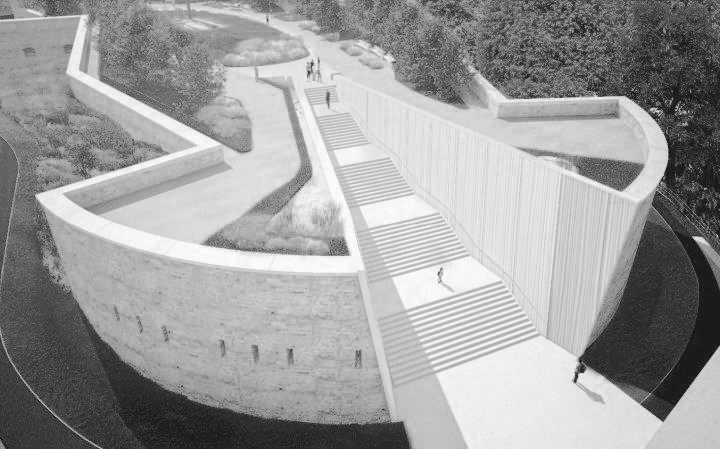Location: Budapest – Gellért Hill
Title: Memory of Rape in War Times
Announcement of the results: 8 March 2022.
Concept: Margit KOLLER, sculptor
Co-creator: Dr. Balázs ALMÁSI
3D visualisation: Gergő NAGY, sculptor
An extract of the concept of our application:This project aims to visualize the contradictions between the representation of the legitimized social forces in power and the suppression of violence manifested in the individual’s life while fighting for his/her their freedom and victory This layer lies under the surface of the official victorious narratives under the bricks of our free life Thereby we are concerned to thematise this conflict with artistic tools in a special public space, highlighting the women victims of the violence of war.
ISSUES OF THE PLAN OF THE MEMORIAL SITE
How to represent the rape in war times in public space?
How can the trauma of rape be represented in public square, the space of social remembering with visual tools? How can a visual reminder created in a public square serve the purpose of dealing with a trauma both at individual and social level so that the widest layers of our community can gain insight into the narratives that have been
suppressed by the position of power, but which affect us all?
The focus of the memorial site plane discussed here is the problem of representing the indescribable and unspeakable trauma of suffering from war violence, the social accessibility of information made as taboo by the position of power, and the community processability of problems arising from this context.
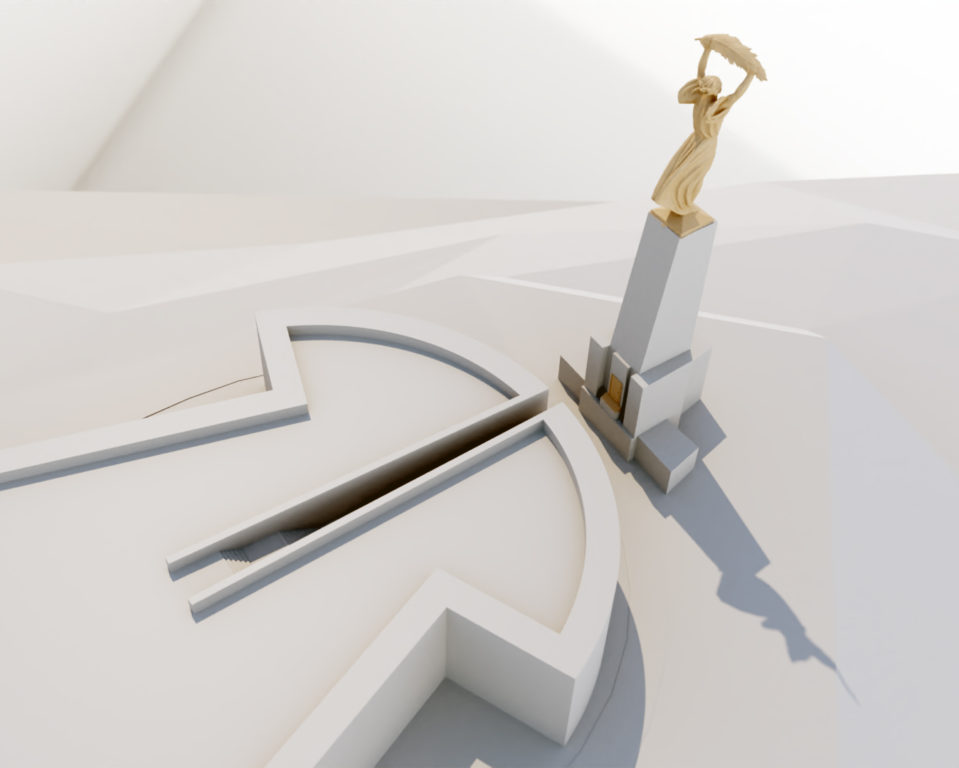
With regard to the issue of representing the war rape in public space, it is important to note that it is one of the dominant manifestations of war violence, which drifts against woman Another manifestation of violence is the capture and or execution of defeated men the practice of these two forms of violence taking place in parallel Rape in war, and so rape in general, is not about sexuality, but about the extreme exercise of power,
aggressive repression and ingestion, the arbitrary and forceful expression of a stronger dominance over the defenseless, the breaking and oppression of the conquered Therefore, although it is about the trauma of individuals (and mostly women), the one who wants to address this topic is sctaching a collective, community wide wound.
However, according to Judith Herman,Herman,‘If the victim is considered as of lower social value (because she is a woman or a child), (…) her experience becomes unspeakable.’ 1 Processing individual trauma works just as hard as dealing with traumas in the community level the society tries to make unpleasant things invisible, much like the individual who stifles or denies their trauma.
In terms of processing by the means of art, although the topic of rape against women including war rape, has become increasingly represented in the world of literature and films recent times, this can no longer be said in the genre of public sculpture The reason for this can be found in the fact that due to the community memory function of a monument, it is always a political ( statement that is decisively present in the living
space of several generations, so the public reaction is inevitably strong when a new monument is erected Moreover, the depiction of war rape is difficult for both outsiders and stakeholders to face with on the one hand due to the sensitivity of the subject, and on the other hand due to the rupture of the wounds of the victims, the not necessarily requested nature of the reminder and the fact that the reminder has never been
requested.
If we take a look around the war memorials in general from which almost every Hungarian village has a statue of military victims they usually line the names of the ( heroes belonging to the given community, and or with allegorical figures, mostly a war goer soldier, who is glorious or a soldier who is just falling, but glorified at the moment
of death They are reminiscent of the terrible yet heroic and glorious nature of war. One side of these representations is when the figure of a wife worrying about his soldier husband marching into war, or a mother mourning his fallen soldier son, appears as representations of the female gender on the subject, but only as a side figure. It seems that the figure of women in the public representations of the war narratives of collective memory may typically be suffering mother or worrying wife (rarely the
little daughter) of the heroic soldier the woman who has the victim of the war rape cannot be. 2 This is also because rape is still a woman’s shame in many cultures, but even where this crime is no longer thought of as such, the victim often feels ashamed, making it to her difficult or impossible to talk.
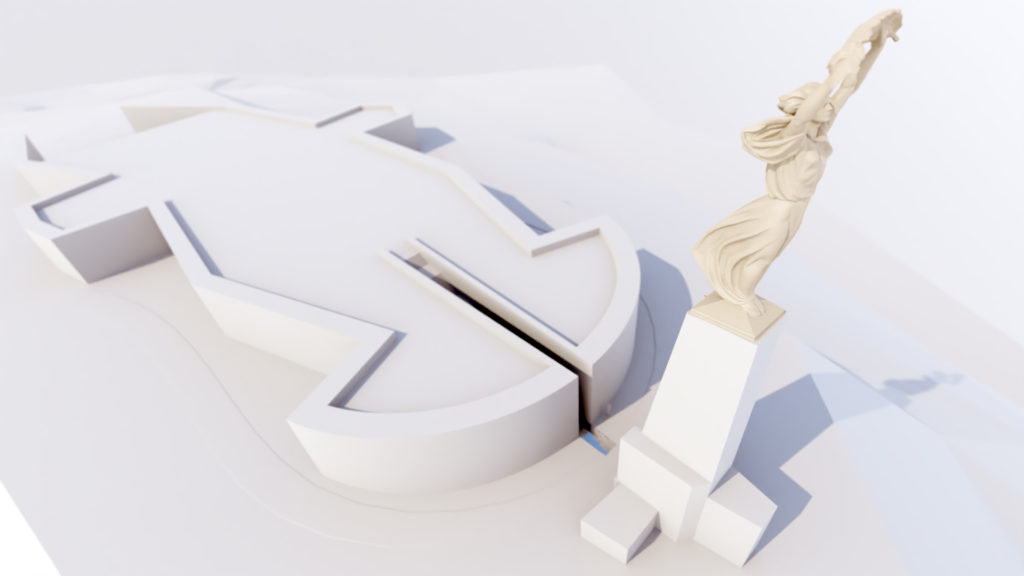
If we examine the psychology of depicting war violence in the categories of subjugation of women (classically more about rape) and subjugation of men (classically more about murder and or imprisonment), we can see that the community narratives look at the latter as a heroic victim, and the former as shame, taboo and therefore unspeakable. This kind of narrative approaches the maintenance of the illusory system of glory and victory. However, war has a suppressed side in which there are parallels
between ashamed women and deserters, retreating soldiers, men ( showing the less glorious, conquering or defensive side of war.
What these people have in common is that they are all victims they could not decide on their subordinate and vulnerable role in the war, and there is nothing heroic about that. 3 Power, on the other hand, needs to maintain the image of the glorious nature of war, so the war narrative makes people driven by command or violence a hero, distributes diplomas and awards, and erects glorious monuments in public spaces to
cover up the helplessness of individuals.
War memorials serve this war historiography although they are about sacrifices, these sacrifices are heroic sacrifices, the symbols of hard achieved freedom, victory, but at least the peace settled. The heroic sacrifice of fallen soldiers is thus a brick of freedom and peace. But victory narratives are always written from a position of legitimised
power. With what brick and mortar the new terrain of freedom was built and at what cost, on what pedestal the new order will be placed, few have access to the legitimacy of its true narration. It is a privilege to look behind the narrative running on the surface, since the knowledge leading to it can only be acquired by the fewest professionals, this level of knowledge is inaccessible and even invisible to society.

Thus, war rape is not only an individual problem of women and their descendants who suffer from it, but it is also linked to other practices of war colonization, oppression and repression. Personal and collective trauma thus come together, so it is the duty of our community to help the confrontation and processing. Freedom can only flourish over a nation where the community faces grievances committed and suffered, unravelling the threads under the narratives of victory, the jointly paid price of glory, and together creates the possible (and by no means forced) field for processing.
1. Judith Herman Trauma and Recovery The Aftermath of Violence From Domestic Abuse to Political Terror quoted from the lecture kept by Gergely Schell psychologist Remembering and forgetting The possibilities of processing of violence of soldiers
https :://www youtube com/watch?v=n 0 zx 36 pAPcc&t= 4712 s free translation
2. Of course, I am not claiming that there are no monuments on this theme at all, but their proportion in relation to other war themed monuments, especially in terms of their domestic occurrence, is representative and supports the above ideas
3. There are stories about women, who have consented to sexual act for certain consideration (food, etc but due to their difficult and vulnerable position, I classify this phenomenon in the same subordinate phenomenon the independence of their decision is only apparent.
THE CONCEPTION OF THE MEMORIAL SITE

Recontextualization of two symbols of freedom with site specific interventions
The planned site specific intervention is not aimed as autonomous artwork, but placing a monument already existing in the public space in a contemporary context Its location is the area between the back of the pedestal of the famous Statue of Liberty on Gellért Hill (originally it was created as the Monument of Liberation of Budapest in 1945 and the part of the Citadel (originally built by the Austrian Empire to control the people
of Budapest) overlooking the Statue of Liberty behind it. The concept was developed taking into account the current transformation plans and works of the Capital concerning the Citadel.
The planned intervention opens the field of highlighting and reminding of the suppressed aspects of collective history at the intersection of the space bounded by the objects named above.
The plan therefore aims to create a scene of wider community remembrance and discourse by bringing the suppressed and repressed aspects of war story processing to the surface by visually colliding the original layers of meaning and the 21 st century shifting of functions of the location.
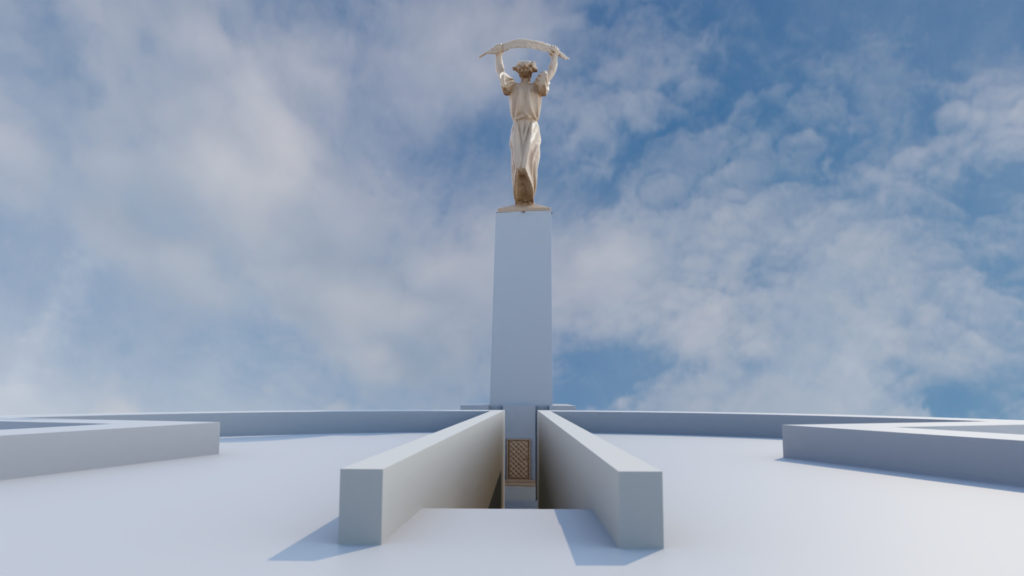
A public memorial must provide an opportunity for newer generations to experience the reality of the collective experiences of their community in the past so that they can relate to them as lessons to their own present and future In this reminder process, a series of complex, overlapping sets of tasks are revealed to both the artist and the audience. One of the tasks of the artist is not letting the monument obscuring the original layers of meaning and not allow it to be distorted by current power narratives. The other is that the visual appearance of the site should become an imprint of
collective memory in such a way that it connects the current aspects of the ‘ past with the possibilities of the present horizon of personal act by creating a collective space for contemporary discourse on the subject.
The venue of our choice is full of overloaded layers of meaning and symbols attached to that venue that have come to the slope of collective oblivion without bringing suppressed narratives to the surface to deal with it at a community level.
The Statue of Liberty and the Citadel are closely related in their original function and symbolism the latter is one of the symbols of the oppression of the Austrian Empire 3, the former originally commemorated to the Soviet soldiers and the highly controversial Liberation of Budapest at 1945. 4 In the generations that have passed since then, the community memory has faded, the original layers of meaning of the statue and building next to each other are covered by oblivion more and more, shaped by the need of
serving the spirit of the present age, tourism and the desire to have fun. They have become the part of the cityscape and have undergone several transformations, moreover, the Citadel is still undergoing a reconstruction with functional change these months. After the regime change in 1989 90 it was a hot topic what to do with the Liberation Monument shall we remove, transform or leave it there? There was no final solution, just few transformations have happened (the figure of the Soviet soldier was
transferred to the Memento Park 5, the title has changed) and some artistic actions took apart. 6 The Statue of Liberty has now become a symbol of FREEDOM in Budapest from the Liberation Monument, and behind it they want to transform the Citadel’s originally fortified building complex to the place of entertainment and culture (lookout tower, park and a ‘museum of the Hungarians’ freedom struggles’ )7
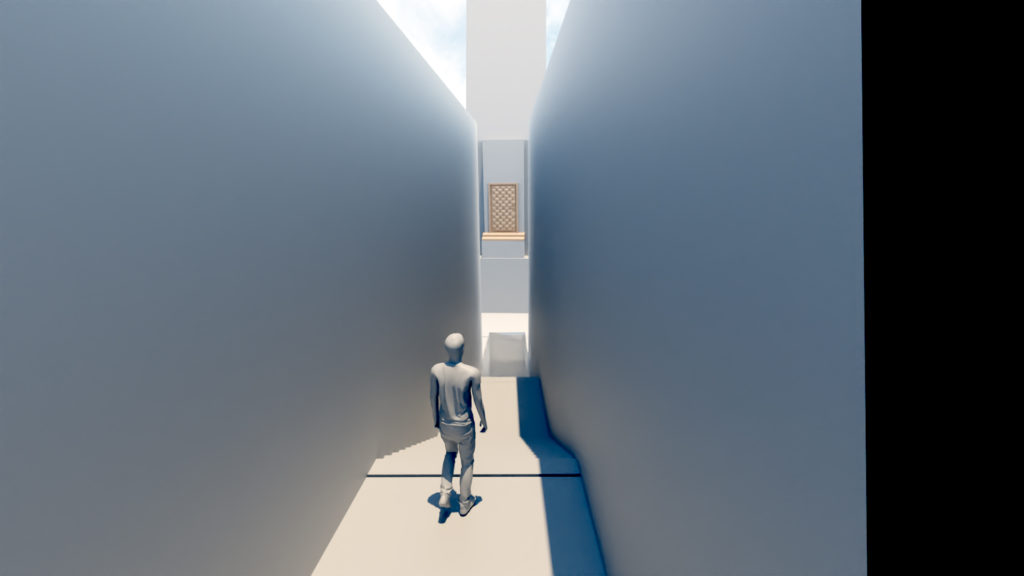
The top of Gellért Hill around the Statue Liberty and the Citadel, which accommodates both locals and tourists, could be an excellent venue and visual carrier for interpreting the concept of the ‘hidden price of FREEDOM’ and the ‘suppressed aspects of PEACE’, especially the taboo context of grievances against women.
3. More information https :://en wikipedia org/wiki/Citadella
4. More information https :://hungarytoday hu/changing symbols liberty statue budapest unveiled 70 years ago 59898
https :://www mementopark hu/en/concept/history/
5. For example Tamás Szentjóby The Statue of Liberty’s Soul ..’The Statue of Liberty’s Soul is an example of how to unchain a community from repression and authoritarian past and present On the one hand it is an attempt to introduce a new beginning, on the other hand it draws our attention to the fact that new or still existent control mechanisms will rule again
https :://www scirp org/html/ 1 1250029 51725 htm
6. Hungarian article about reconstructing the Citadel:
https://telex.hu/belfold/2021/04/21/meglekelik a citadellat a szabadsag szobor mogott
VISUALISATION

Representing the suppressed price of freedom and glory in the context of discoverability
By the joint reflection of the artificial stone door we place the pedestal of the Statue of Liberty, the Statue of Liberty from an embarrassing point of view and the shape of those who walk on it on a common plane, a new system of relations is created between the audience and the genius loci
In the virtual reflection, the narrative of power and the silent systematic humiliation and objectification of women are brought to the same level, and at the same time the timelessness of the issue is revealed. The visual tools of the planned intervention place a contemporary aspect of the topic, the visualization of the contradiction between representation and suppression in the focus of the spectacle, the new spatial context allows the perception of and reflection on this contradiction in a collective and
individual context.
The planned memorial site connects the space of the Statue of Liberty and the Citadel both in terms of content and form with the visual method of public intervention and supplementation. We have designed a door to the centre of the unit forming the back of the pedestal of the Statue of Liberty It is molded from artificial stone and displays a leather covered and button stitched door that is so characteristic of the door to the CEOs’ office the symbolic space of authority of our days. The door, located on the pedestal of the Statue of Liberty, separates from the viewer the symbolic, closed and
hidden space on which the allegory of freedom has been built. However, the exploration is left behind the door, as a space element cast into an unopenable block, is closed, the dimension meaning behind it, the space of inaccessibility remains hidden from the viewer. The enclosed space cannot be accessed from below, from the viewer’s position, even though stairs lead to it, they start at a height that people from down cannot reach. The illumination of the door at night, the penetration of the light scattered from below the threshold, emphasizes the secret, injustice and inequality of the closed and inaccessible space.
The Citadel behind the Statue of Liberty is currently undergoing a reconstruction ::‘the rondella (protruding round bastion) will be transformed into a museum commemorating the >>Hungarian freedom struggles<<, the inner, currently unused area of the Citadel will be transformed into a park according to the town planning concept 7 Breaking down the east wall, a wedge shaped flight of stairs will connect the Statue of Liberty to the observation deck on the Citadel
Our memorial site plan reinforces the different readings that lie beneath the surface of collective memory framed by official history narrated from the position of power and the often simplified narratives of freedom. We recommend the wedge shaped staircase on a smaller scale so that people walking along it will inevitably encounter the additional intervention of the Statue of Liberty, and so that, in our opinion, the impregnable fortress like character of the Citadel is less disrupted, while the memory of its historic function is better preserved. The narrowed staircase connects the memorial site, which is designed to be located at the base of the Statue of Liberty,
with the upper park of the Citadel in such a way that, as you walk upwards, the height of the walls gradually decreases, thus gradually opening up the space from the war memorial towards the Liberty Square, while from the opposite direction the perspective of the rising walls draws attention to the central elements of the memorial site. The proposal to narrow the ramp should be discussed with the developers of the reconstruction works that will transform the Rondella. This change on the planned ramp of the Rondella will not cause extra cost in our tender and also cuts the cost of the reconstruction process of the Citadel.
The staircase we propose is 180 cm wide, leads to a flat walkway between the Statue of Liberty and the Citadel acting as a narrow alley in relation to the proportions of the space. We install a mirror plate inside it that is located below the plane of the walking surface. The walking plane is made of safety glass which provides the view to the mirror plate as in case of the public presentation of excavated archaeological dig in the cities.
On the reflected image on the mirror plane our public interventions and additions meet the original forms and spaces, but in an unusual perspective, as a common timeline this is the essential motif of our plan. The mirror plate depicts the allegorical female figure of the glorious Statue of Liberty from a frog’s perspective, as a result of which the viewer encounters an indecent and therefore embarrassing point of view under the skirt of the female figure. This gesture draws the viewer’s attention not in the least to the desecration of the Statue of Liberty, but to a more nuanced perception of the representation of different positions of power In encountering the work, the audience walking there may ask themselves what they choose to behave looking away from the sight of the embarrassing perspective and leave it, or give it a try to search their
own position and at the same time their relation to the system of symbols we have created in the mirror.

The visual elements of the plan draw the attention of visitors to the nuanced, oppressive and suppressed aspects behind the often simplified narrative of freedom, the complexity of the price of freedom and the achievement of peace, with a special focus of the violence against women. On a plane that reflects the facts in many ways the mirror reveals the almost forgotten reading of the two local symbols of oppression (the Statue of Liberty and the Citadel). The creative intervention thus brings the need of facing with the oppressed and unpleasant narratives lurking in the space of freedom, liberation, peace of victory and joyful amusement to the surface, exposing viewers to its personal and societal potential.
Last but not least, another element of the competition aims to provide interpretive assistance to viewers less accustomed to contemporary monument trends without making the memorial site didactic. We designed an inscription in the concrete wall of the driveway cut into the Citadel, which, cast in concrete, would appear in negative on one side of the section near the Statue of Liberty.
Suggested caption
WAR STORIES ARE NARRATED BY THE WINNERS BUT THERE IS SOMETHING THAT CANNOT BE SAID, WHICH IS USPEAKABLE, BECAUSE ITS WEIGHT IS UNBEATABLE. WHICH IS EXISTING IN SECRET THROUGH THE MEMORY OF THE INDIVIDUALS AND FAMILIES OF THE COMMUNITY WITH ITS WEIGHT.
VICTORY AND FREEDOM HAVE A SERIOUS PRICE CAN WE FACE COMMONLY AND HONESTLY WITH THE UNSPEAKABLE, UNDERCOMABLE, PRICE ACTUALLY PAID.
MEMORIAL SITE OF WOMEN RAPED IN WAR
With a regard to the caption I make this text proposal at the application stage, however, in case of a winning application, it will be necessary to invite a text specialist to edit it.

